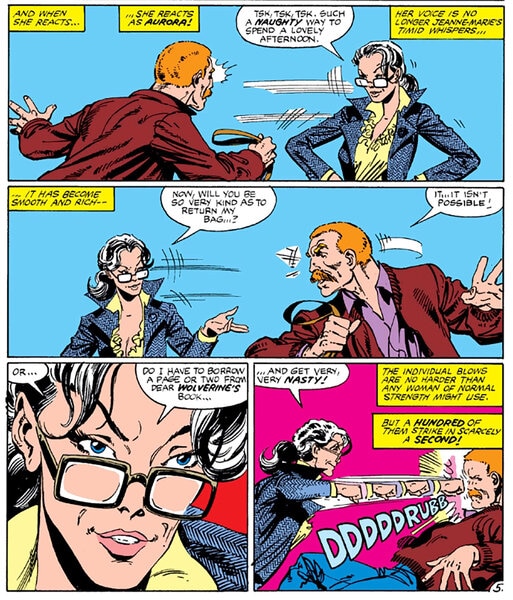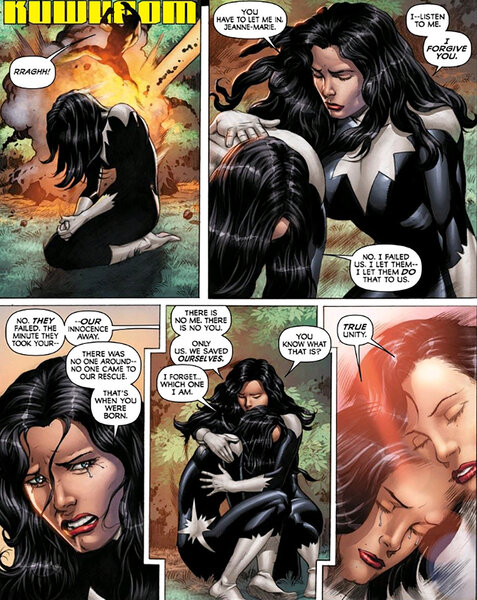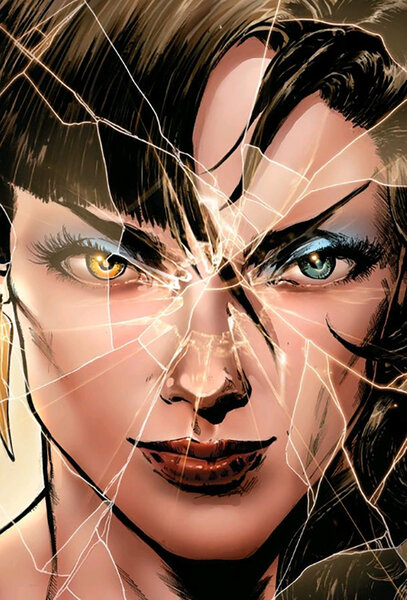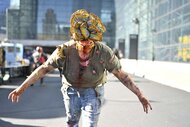Create a free profile to get unlimited access to exclusive videos, sweepstakes, and more!
X-Men's Aurora, religion, and dissociative identity disorder
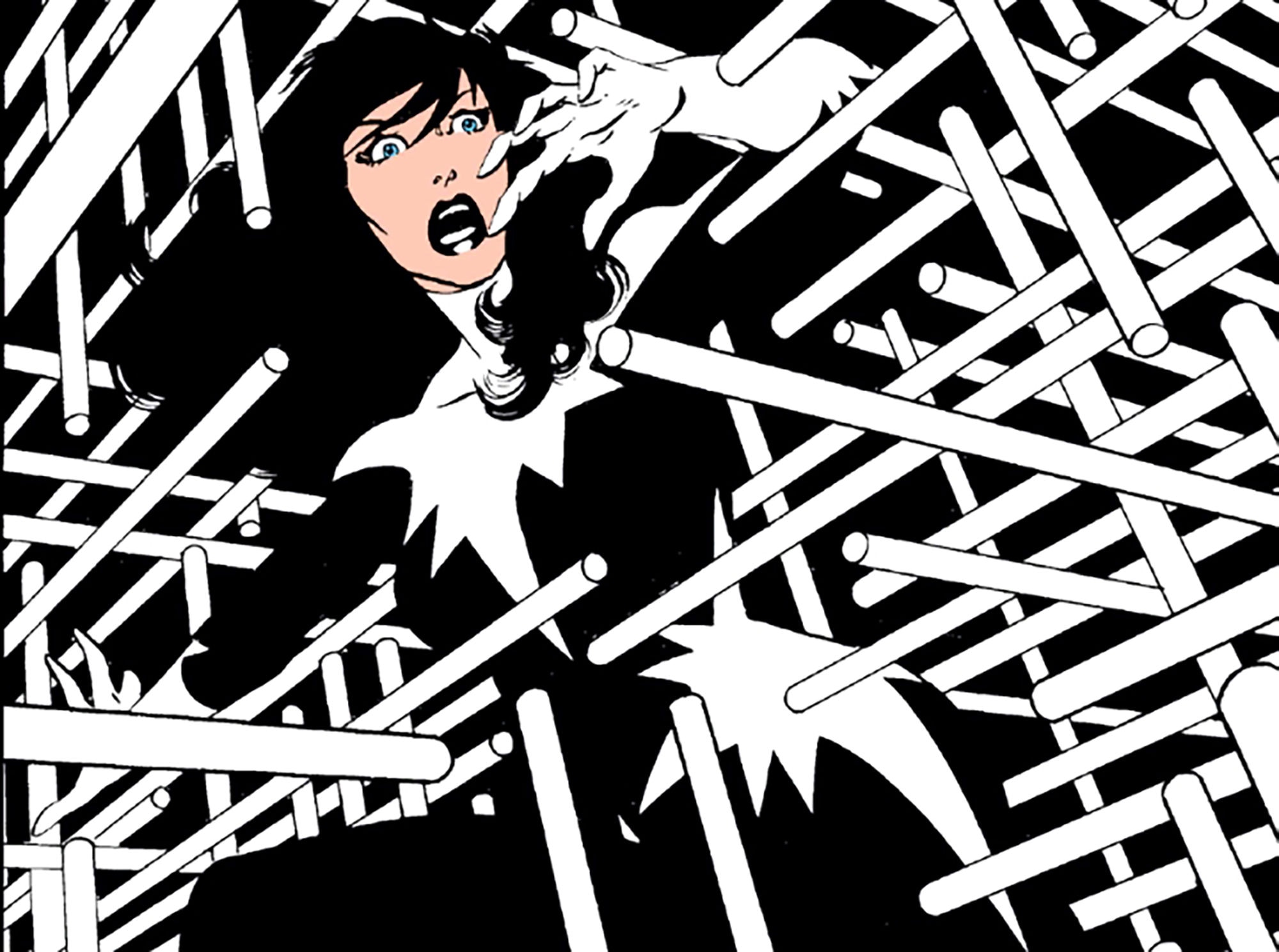
Content warning: This is a story in which traumatic religious upbringing, sexual assault, and themes of self-harm feature prominently.
First introduced in Uncanny X-Men #120 with much of its core cast intact, Alpha Flight arrived on the scene to ambush Wolverine and steal him back from the X-Men. This is a very strange motivation for a superteam to have, one that almost came to define them, given a lack of solid thematic focus ever since. In contrast to other super teams, Alpha Flight was assembled not by their own morality but rather by an evil government agency known as Department H. Headed up by the agonizingly naive couple, James Hudson and Doctor Heather Hudson, Alpha Flight serves as Canada’s most prominent and also only superteam.
If you’re familiar with Aurora at all, chances are you know her as the superhero Northstar’s troubled twin sister or a background character in some Alpha Flight stories — yet this is a character with a nearly four-decade history in Marvel comics who regularly appeared in various series over that time. So, why don’t we ever see any Aurora stories in the Marvel Universe?
Frankly, that is a way more complicated question than you might think, and the answer is going to take us all the way through the story of one of Marvel’s strangest concepts.
Aurora's Backstory
Jeanne-Marie and Jean-Paul Beaubier are twins who were separated at birth when their parents died. Jean-Paul was adopted by a loving family, while Jeanne-Marie was sent to the significantly more ominous Madame DuPont’s School for Girls in Quebec.
Though it was mostly retconned into her story later, Jeanne-Marie was sexually abused by the man appointed to be her social worker at the school. When this storyline was first introduced, it was implied that extreme discipline from nuns was primarily responsible for Aurora’s fractured persona, but now we know that both of these things played a part in Aurora's troubled childhood. At 13, she attempted suicide by simply walking off the rooftop of the school. In this exact moment, her mutant powers developed and she flew herself to safety.
Believing this to be divine intervention, Jeanne-Marie was thrilled and told her headmistress all about it. She was called a blasphemer and was physically punished. These compounded traumas led her to develop another personality, Aurora, who is portrayed as being more “wild and free” than her repressive counterpart. The virgin-whore dichotomy is incredibly literal in Aurora’s tale, and it is not subtle. The traumatized Jeanne-Marie is categorized as the “weaker” personality, while Aurora teeters between being entirely defined by her sexuality and representing the more heroic traits of the character.
While all this is traumatic to the point of seeming overwrought, this story is not a terribly far cry from recorded atrocities committed by various church-affiliated Canadian orphanages. No doubt partially inspired by real-world horror of stories like the Duplessis orphans, with fictional inspiration in the form of Brian De Palma’s Sisters and even a touch of what is generally regarded as pseudoscience from books like Flora Rheta Schreiber’s Sybil, Aurora was born.
Religion and the Development of Aurora’s Personas
It’s important to note immediately that the existence of dissociative identity disorder has been widely called into question. Groundbreaking, definitive cases on which psychologists have based their understanding of DID have been reviewed more recently with greater skepticism towards exploitative doctors and family members who sought to gain from a patient's trauma in obvious monetary ways. That said, so-called “multiple personality disorder” has certainly made a place for itself in fiction over the last century, appearing in everything from comic books to soap operas and beyond.
Also notable is the role of religion that prominently appears in story arcs featuring characters suffering from DID. Regularly, the disorder is related directly to the sexual abuse of women by older male authority figures, and Aurora is no different. Her disorder is attributed as a byproduct of combined sexual abuse and repression. The portrayal of women with DID tends to be a fairly offensive trope overall, limiting the effect of extended trauma to nothing more than a series of sexual hangups. The implication that Aurora is intrinsically mentally fragile and hysterical is reinforced constantly, resulting in a cartoonish take on the effects of abuse. As with many fictional characters that are given the diagnosis of DID, it is the central defining conflict in her existence. Outside of this core struggle, Aurora does not exist.
The Trouble With Jeanne-Marie
Time and again, Jeanne-Marie returns to the school where she was hurt. Now in a position of authority herself, there is little to no focus on what her interactions with her students or her peers are like. Why she repeatedly returns to the scene of her greatest pain in life is seldom addressed beyond her simply being stubborn and regressive. What became of the man that assaulted her and whether or not she continues to interact with him is a question that never even arises. Her writers have only skimmed the surface of her issues of deep trauma without taking responsibility for what that really entails.
Aurora appears in the Weapon X series romantically involved with the physically abusive villain Malcolm Colcord. In the Weapon X: Days of Future Now story, the moment she appears on-page, Wolverine grabs her shoulders and slaps her in the face repeatedly until she changes personalities to a third which she had only recently developed — as a response to being physically assaulted. Many of Aurora's appearances during this time period were beyond disturbing and condoned violence towards her as being more or less acceptable, even to be expected.
Aurora has appeared in many several of Marvel’s alternate realities, but these stories only help to reinforce the disposability of the character. She shows up in Age of Apocalypse alongside her brother as mutant supremacists, but they are defeated within a page by Cyclops. The twins are zombies alongside the rest of Alpha Flight in Marvel Zombies and are rapidly killed. In Earth X, she dies just to fill space. In The End, she appears as an apparition to Northstar, while in Age of X, her death is the excuse given for Northstar’s rage towards and attempted murder of Kitty Pryde. In short, this is a character who not only is consistently badly characterized in the standard 616 Marvel Universe, but who is thrown away faster than a tissue in all alternate realities in which she has appeared.
Over and over, these stories send the same messages about Aurora. The intense focus on how her trauma interacts with her sexuality lacks compassion. The repetition of gendered and sexual violence against her and the implication that she “chooses” to be hurt reappear constantly. The way other characters dismiss her as "crazy" and fail to give her any credence whatsoever reflects how women like Aurora are treated in real life when they ask for help or try to establish boundaries. Meanwhile, addressing child abuse in religious organizations would require a great deal more depth and accountability to be effective. In the end, these creative choices are made without self-awareness of the damage these messages can cause, and the image of a "shattered" woman is reinforced.
Where Writers Go Wrong With Aurora
When Aurora returned with the rest of the team in the 2011 Alpha Flight series, we saw an actual separation in the physical forms between Aurora and Jeanne-Marie. In keeping with the general outlook of most have taken on the character, Aurora is the superhero while Jeanne-Marie is regarded as being essentially a bundle of prudish criticism and nervous tics. She is theoretically better by the end of the story, having merged her personalities into one.
Of course, “fixing” Aurora in order to make her an effectual character is problematic. The longstanding assumption that she is "broken" is limiting and tragic, and it has left us with a character stuck in quicksand. Obviously, that isn’t how mental health works, and it isn’t how people work. We don’t have to “fix” the people we love in order to love them or find them interesting. Without giving any glimpse of a deeper process of healing beyond the science-fiction surface value plot of the story, writers fail this character. While we want to see Aurora do better and feel healthier, attempting to address lifelong upheaval in such shallow, "quick fix" ways is anything but helpful to the continued narrative of mental health.
One of the most frustrating aspects of Aurora is that she's been reduced to a series of tropes rather than be allowed to flourish as a fleshed-out character. Much of the religious commentary falls flat without having any clear direction. No one is held accountable for their treatment of her. Her entire personality is attributed to being a mere byproduct of abuse. In the end, Alpha Flight is a whole team that deserves to be written by someone that sees them as more interesting than a less-good version of the Avengers, but nowhere is that more apparent than with Aurora, who has been showing up to do little more than raise the emotional stakes for the other characters, at the cost of her own personal development, for the better part of four decades.
